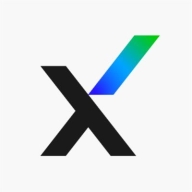

Microsoft Defender for Cloud Apps and Trellix Advanced Threat Defense both offer cloud-based security solutions. Microsoft Defender for Cloud Apps is preferred for its pricing and customer support, while Trellix Advanced Threat Defense stands out in advanced threat detection and features.
Features: Microsoft Defender for Cloud Apps provides seamless integration with Microsoft products, robust threat protection, data loss prevention, and app governance. Trellix Advanced Threat Defense offers advanced malware analysis, detailed threat intelligence, and in-depth threat analysis tools.
Room for Improvement: Microsoft Defender for Cloud Apps could enhance its advanced threat detection capabilities, expand features beyond the Microsoft ecosystem, and improve user interface aesthetics. Trellix Advanced Threat Defense might benefit from simplifying deployment processes, improving integration with non-Trellix solutions, and offering more competitive pricing.
Ease of Deployment and Customer Service: Microsoft Defender for Cloud Apps is known for easy integration with Microsoft environments and strong customer support. Trellix Advanced Threat Defense has a more complex setup due to its sophisticated tools but offers comprehensive deployment resources and support for complex environments.
Pricing and ROI: Microsoft Defender for Cloud Apps is known for lower setup costs, offering significant value with integration capabilities. Trellix Advanced Threat Defense, though pricier, is perceived to deliver higher ROI for organizations needing advanced threat detection and detailed analytics.

Microsoft Defender for Cloud Apps is a comprehensive security solution that provides protection for cloud-based applications and services. It offers real-time threat detection and response, as well as advanced analytics and reporting capabilities. With Defender for Cloud Apps, organizations can ensure the security of their cloud environments and safeguard against cyber threats. Whether you're running SaaS applications, IaaS workloads, or PaaS services, Microsoft Defender for Cloud Apps can help you secure your cloud environment and protect your business from cyber threats.
Reviews from Real Users
Ram-Krish, Cloud Security & Governance at a financial services firm, says that Microsoft Defender for Cloud Apps "Integrates well and helps us in protecting sensitive information, but takes time to scan and apply the policies and cannot detect everything we need".
PeerSpot user, Senior Cloud & Security Consultant at a tech services, writes that Microsoft Defender for Cloud Apps "Great for monitoring user activity and protecting data while integrating well with other applications".
Simon Burgess,Infrastructure Engineer at SBITSC, states that Microsoft Defender for Cloud Apps is "A fluid, intelligent product for great visibility, centralized management, and increased uptime".
Uncover Hidden Threats
Combine in-depth static code analysis, dynamic analysis (malware sandboxing), and machine learning to increase zero-day threat and ransomware detection.
Threat Intelligence Sharing
Immediately share threat intelligence across your entire infrastructure—including multi-vendor ecosystems—to reduce time from threat encounter to containment.
Enable Investigation
Validate threats and access critical indicators of compromise (IoCs) needed for investigation and threat hunting.
We monitor all Advanced Threat Protection (ATP) reviews to prevent fraudulent reviews and keep review quality high. We do not post reviews by company employees or direct competitors. We validate each review for authenticity via cross-reference with LinkedIn, and personal follow-up with the reviewer when necessary.